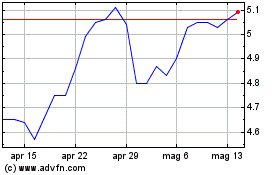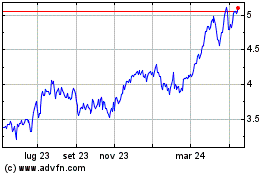- 72% of middle-income consumers say prices on goods and
services rose in the second quarter.
- 90% of households made budget cuts to contend with higher
prices, and 41% have turned to second jobs and side gigs.
- A majority of households believe homeownership is not a
requirement to be financially prosperous, driven by affordability
concerns.
Santander Holdings USA, Inc. (“Santander US”) today announced
findings from a new survey that shows middle-income households are
cutting back on spending, taking second jobs, and delaying large
purchases—such as cars and homes—to adapt to higher prices as
inflationary pressures continue. Nearly three in four middle-income
households (72%) reported seeing prices rise in the second quarter,
and four in five (78%) said inflation is a major concern. To cope,
most middle-income households (90%) have made spending cuts in at
least one area, and many plan to curtail spending on a range of
items this summer—from vacations to entertainment to summer camps
and childcare. Four in 10 said they have taken on a second job or
side gig in the last 12 months to help make ends meet.
This press release features multimedia. View
the full release here:
https://www.businesswire.com/news/home/20240624053235/en/
(Graphic: Business Wire)
By making these trade-offs, many consumers have remained
resilient despite higher prices, with eight in 10 middle-income
households (77%) staying current on their bills. This helps to
explain why the overwhelming majority of middle-income consumers
continue to be optimistic about their financial futures, with most
(72%) believing they are on the right track toward financial
prosperity.
“While current economic conditions remain challenging, American
households are showing great resiliency by taking the necessary
actions to navigate through inflationary pain points,” said Tim
Wennes, CEO of Santander US. “For many households, this has meant
scaling back on spending, including summer activities. We
understand consumers often face difficult choices in making these
adjustments. At Santander, we are proud to be a resource and offer
support to our customers as they make the necessary decisions that
will help them achieve their financial goals.”
Most middle-income Americans (81%) say the high cost of housing
is a major financial issue in the United States. Higher housing
prices have led to a shifting view on the importance of
homeownership, with many appreciating the flexibility of renting.
Half of middle-income Americans (51%) believe that homeownership is
not a requirement to be financially prosperous, compared to 27% who
believe it is. Of those who rent, six in 10 believe having an
affordable home, even if renting, is more important to achieving
financial prosperity than having equity in a home.
The study, which built upon previous research, assessed
middle-income Americans’ current financial state and future
aspirations, with a focus on how current economic conditions have
impacted their households. It also explored their financial
relationships with drivers of prosperity, including vehicle access,
housing, and banking providers.
Vehicle Access Vital for
Consumers Middle-income Americans believe that vehicles
are critical for providing flexibility in their lives and access to
employment. Nearly all (93%) own or lease a vehicle, and the
majority (70%) would be willing to sacrifice other budgetary items
to maintain a vehicle. Vehicle use reflects this demand, as more
than half with a vehicle (53%) drive at least 10,000 miles each
year. Most middle-income Americans (76%) rely on a vehicle to get
to work, and 74% say not having access to a vehicle would impair
their financial situation. Accessing a vehicle is becoming even
more critical among younger generations. Four in 10 middle-income
Americans have relied on a vehicle to perform gig work at some
point, with Gen Z (57%) and millennials (50%) being the most likely
to do so.
Housing Affordability and
Preferences As consumers contend with high housing
costs, multifamily housing is a critical path for many to achieve
financial prosperity. Middle-income Americans cite affordability
(51%), ease of maintenance (35%), and better location (32%) as top
reasons for choosing to live in a multifamily property. Seven in 10
middle-income Americans living in multifamily households are
renting, an important option that provides them with more financial
flexibility. Of those living in multifamily homes, the majority
(71%) believe they are a good solution to produce more affordable
housing options, and 65% say it allows them financial
flexibility.
Banking and Savings As
consumers continue to face economic headwinds, they are turning to
their banks for direction as they pursue their financial goals.
Most middle-income Americans (79%) say they trust the financial
information and guidance they receive from their bank. However,
many have yet to take advantage of the opportunity to grow their
savings in a high-rate environment. Six in 10 households have not
moved their savings to receive a higher rate of interest since
rates began to increase in 2022. Overall, more than half of those
who know the interest rate on their savings are earning less than
3%, and more than one in five are not even aware of what they are
earning.
This research on financial prosperity, conducted by Morning
Consult on behalf of Santander US, surveyed 2,202 Americans who are
bank and/or financial services customers, ages 18-76. Survey
participants are employed or looking for work, own/use at least one
financial product and are the primary or shared-decision maker on
household finances, with household incomes in the “middle-income”
range of ~$50,000 to $148,000. This Q2 study was conducted in May
2024. The interviews were conducted online, and the margin of error
is +/- 2 percentage points for the total audience at a 95%
confidence level. Percentages may not total 100 due to rounding.
The data was weighted to target population proportions for a
representative sample based on age, gender, ethnicity, region, and
education.
The full report and more information about the Santander US
survey is available here.
About Santander US Santander
Holdings USA, Inc. (SHUSA) is a wholly-owned subsidiary of
Madrid-based Banco Santander, S.A. (NYSE: SAN) (Santander),
recognized as one of the world’s most admired companies by Fortune
Magazine in 2024, with approximately 166 million customers in the
U.S., Europe and Latin America. As the intermediate holding company
for Santander’s U.S. businesses, SHUSA is the parent company of
financial companies with more than 11,800 employees, 4.5 million
customers, and assets of over $165 billion in the fiscal year ended
2023. These include Santander Bank, N.A., Santander Consumer USA
Holdings Inc., Banco Santander International, Santander Securities
LLC, Santander US Capital Markets LLC and several other
subsidiaries. Santander US is recognized as a top 10 auto lender
and a top 10 multifamily bank lender, and has a growing wealth
management business. For more information about Santander US,
please visit www.santanderus.com.
About Santander Bank, N.A.
Santander Bank, N.A. is one of the country’s leading retail and
commercial banks, with $102 billion in assets. With its corporate
offices in Boston, the Bank’s more than 5,100 employees and more
than 1.8 million customers are principally located in
Massachusetts, New Hampshire, Connecticut, Rhode Island, New York,
New Jersey, Pennsylvania and Delaware. The Bank is a wholly-owned
subsidiary of Madrid-based Banco Santander, S.A. (NYSE: SAN),
recognized as one of the world’s most admired companies by Fortune
Magazine in 2024, with approximately 166 million customers in the
U.S., Europe, and Latin America. It is overseen by Santander
Holdings USA, Inc., Banco Santander’s intermediate holding company
in the U.S. For more information on Santander Bank, please visit
www.santanderbank.com.
Santander Bank, N.A. is a Member FDIC and a wholly owned
subsidiary of Banco Santander, S.A. © 2024 Santander Bank, N.A. All
rights reserved. Santander, Santander Bank, the Flame Logo are
trademarks of Banco Santander, S.A. or its subsidiaries in the
United States or other countries. All other trademarks are the
property of their respective owners.
View source
version on businesswire.com: https://www.businesswire.com/news/home/20240624053235/en/
Media: Andrew Simonelli andrew.simonelli@santander.us
Caroline Connolly caroline.connolly@santander.us
Grafico Azioni Banco Santander (NYSE:SAN)
Storico
Da Dic 2024 a Gen 2025

Grafico Azioni Banco Santander (NYSE:SAN)
Storico
Da Gen 2024 a Gen 2025
